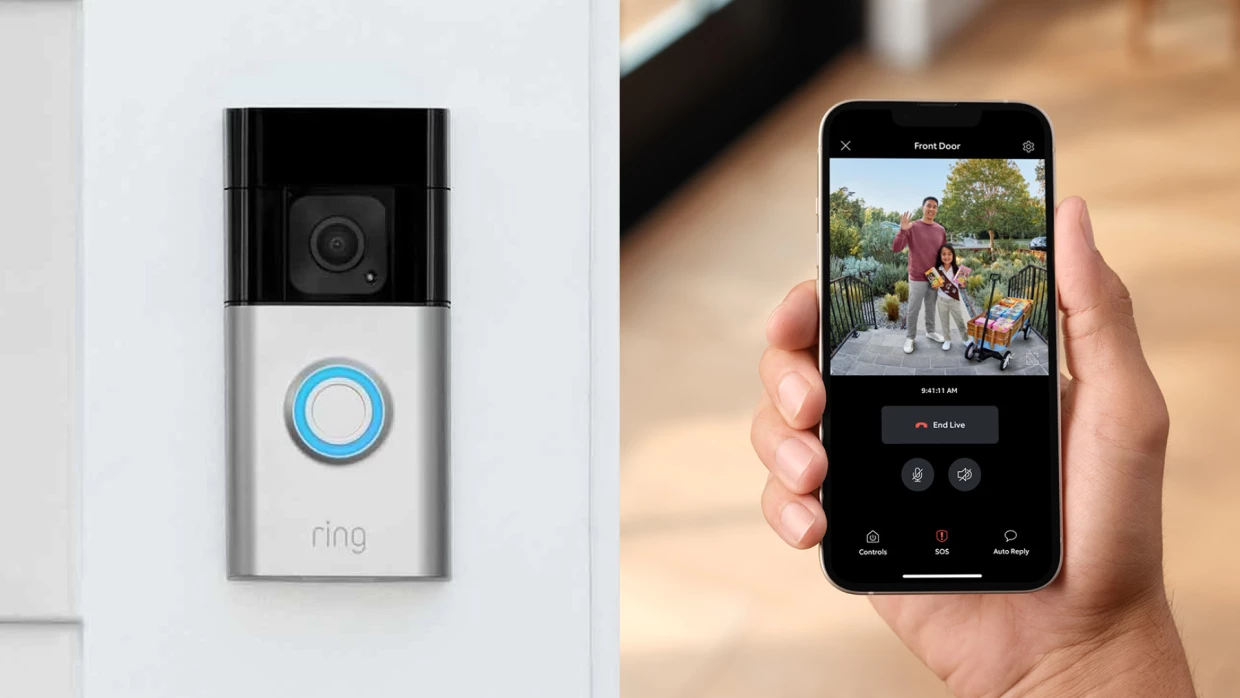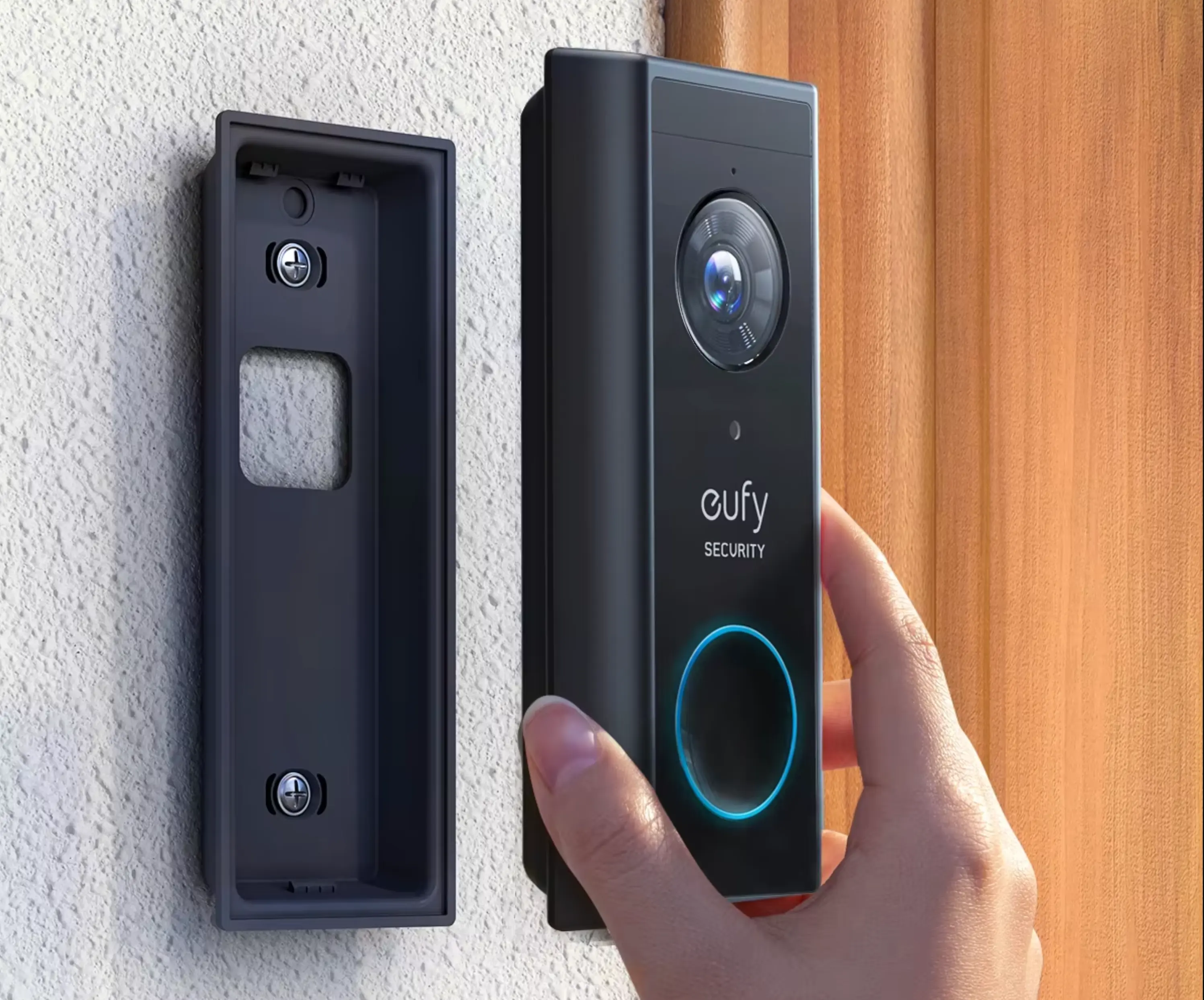Featured Article
Understanding Video Doorbells:
A Comprehensive Guide
In today's world, keeping homes safe is a growing concern, and video doorbells have become a key tool for many people looking to protect their property. But what exactly are video doorbells? How do they function, and why are they so widely used?
What Is a Video Doorbell?
A video doorbell is a device equipped with a camera, microphone, and speaker that allows homeowners to see and communicate with visitors at their front door. These devices connect to your home’s Wi-Fi, enabling live video and audio feeds to be sent directly to your smartphone, tablet, or computer. Even if you’re miles away from home, you can still see who’s at your door and talk to them through a mobile app. Modern video doorbells also come with features like motion detection, night vision, and the ability to record video for future reference.

This article provides a comprehensive guide to video doorbells. We will cover why you should consider installing a video doorbell, including the added security and convenience they offer. Additionally, we’ll explore the differences between wired and wireless video doorbells, helping you decide which option is best for your home.
Wired vs. Wireless Video Doorbells
Video doorbells fall into two main categories: wired and wireless. Each has its own advantages and disadvantages, so it’s important to understand what works best for your home.
Wired Video Doorbells
Wired video doorbells are connected directly to your home’s electrical system. If you already have an existing doorbell, you may be able to use its wiring for your new system. This type of setup ensures that your doorbell is always powered and ready to use without the need for frequent battery changes. Additionally, wired systems tend to be more reliable since they don’t rely on batteries that can drain over time. Below is a list of the pros and cons of wired video doorbells:
- Continuous power: No need to worry about recharging or replacing batteries.
- More stable connection: Because wired systems aren't dependent on batteries, they tend to offer more consistent performance.
- Work with existing doorbell chime: Can integrate with your existing doorbell chime, allowing the video doorbell to ring through the current sound system you already use.
- Installation complexity: Installing a wired video doorbell often involves dealing with electrical wiring, which may require professional help.
- Limited placement: The doorbell must be placed where the wiring is available, typically at your front door.

Wireless (Battery-Powered) Video Doorbells
Wireless video doorbells run on rechargeable batteries, offering more flexibility in terms of where you can install them. This type of doorbell is ideal for homes without existing wiring. Below is a list of the pros and cons of battery-powered video doorbells:
- Flexible Placement: Since you're not limited by existing wiring, you can install the doorbell wherever it's most convenient, whether it's by the front door, back door, or even a gate.
- Battery Maintenance: You'll need to recharge or replace the batteries every few months.
- Potential Downtime: If the battery runs out and you don’t recharge it in time, the doorbell will be non-functional until it’s powered up again.

Another important consideration is that most battery-powered wireless video doorbells do not come with a built-in chime. However, you can easily add a separate wireless chime, allowing you to hear the doorbell ring throughout your home, much like a traditional setup.
It’s also perfectly fine to use these video doorbells without a chime. Regardless of whether a chime is installed, you will receive push notifications on your phone, tablet, or computer whenever someone rings the doorbell. Additionally, most models will send alerts when motion is detected in the camera’s field of view. These notifications can be customized or turned off if desired, but the default setting ensures you are alerted whenever someone either rings the doorbell or is detected by the camera.
So Should I Choose Wired or Wireless?
Whether you choose a wired or wireless video doorbell depends on your home’s setup and your specific needs. Wired doorbells provide reliable, continuous power and are great for homes where existing wiring is already in place. Wireless doorbells, on the other hand, offer flexibility but require occasional battery maintenance.
As a general rule, if your home already has an active doorbell with existing wiring, we strongly recommend choosing a wired video doorbell. Wired models provide more consistent and reliable performance, as they don’t require battery charging. Once installed, they operate continuously without any additional maintenance, and they also integrate seamlessly with your home’s existing doorbell chime, offering a hassle-free, long-term solution.
Conclusion
Video doorbells are an affordable and practical way to enhance your home’s security and convenience. With options available for both wired and wireless setups, there’s a video doorbell that fits every household. By understanding the key features and differences between installation methods, you can make an informed choice that keeps your home safe and gives you peace of mind, no matter where you are.